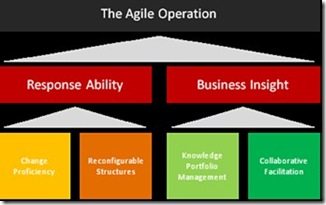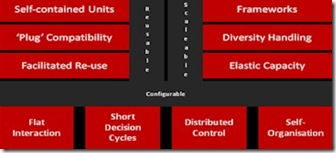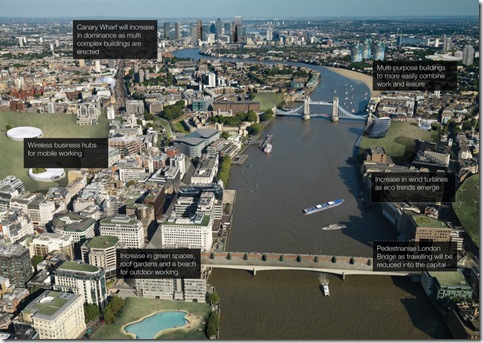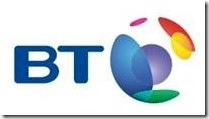I recently spoke at a meeting of Microsoft Alliance Partner Hitachi Consulting on the topic of Dynamic Work and Andrew Barlow, Hitachi’s Head of Strategy, shared with me their whitepaper on ‘Building an Agile Response to Change’.
What I like most about the paper it’s reinforcement that ‘agility’ comes from a number of different perspective and dimensions. In ‘Dynamic Work,’ I have looked the parallels between increasing flexibility in computer systems (eg. SOA) and ‘human’ systems (eg. flexible working), but Andrew takes the concept even more broadly. At the outset, he proposes…
“Agility is derived from two core enterprise-wide competencies:
· the physical ability to act quickly and appropriately (what we call ‘response ability’)
· the intellectual ability to find appropriate things to act on (what we call ‘business insight’)”
He goes on to explore four ‘pillars’ (see diagram above) of which the ‘Reconfigurable Structures’ piece particularly evokes the principles of flexibility in both system and organisational design…






